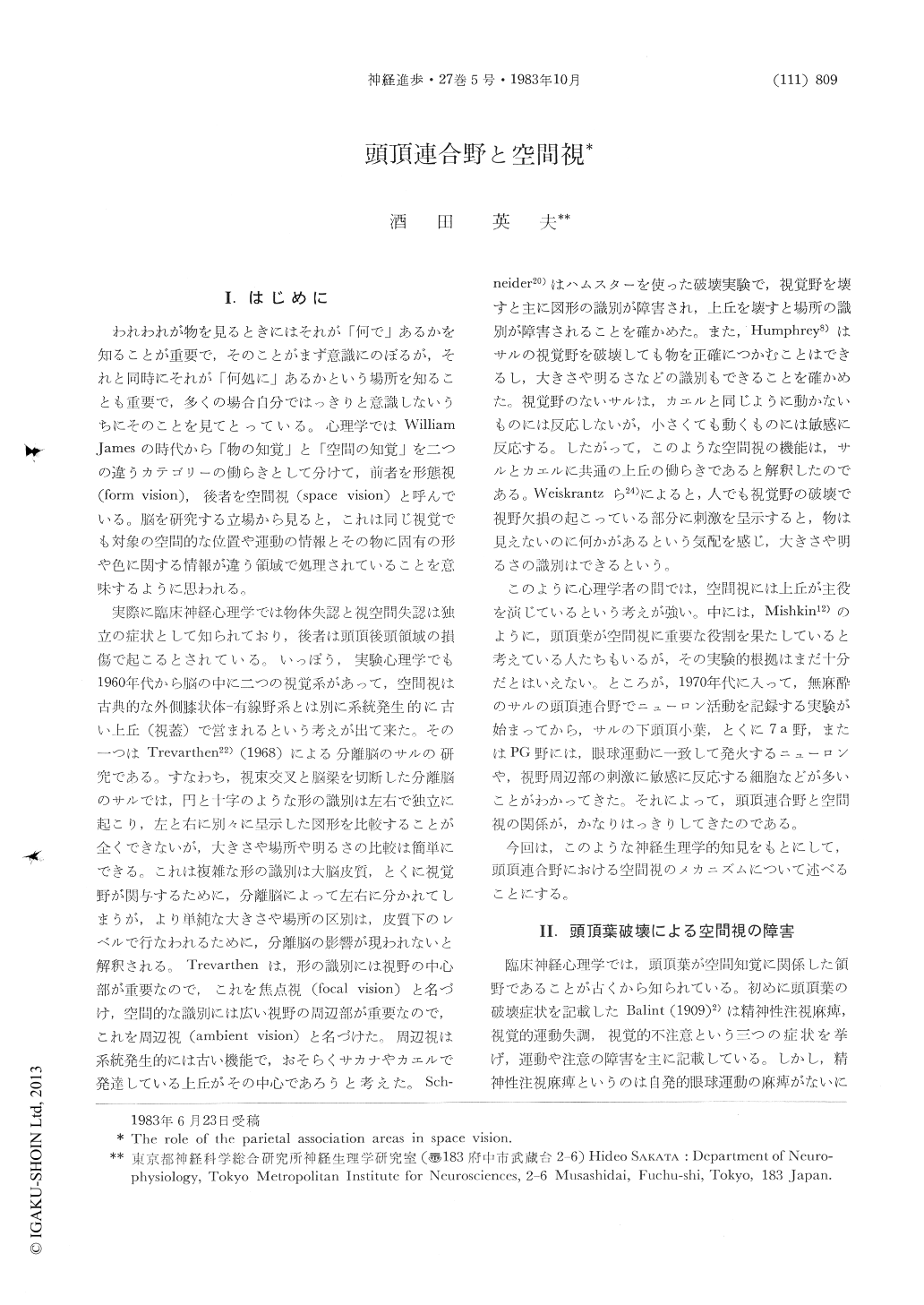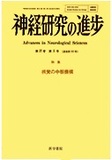Japanese
English
- 有料閲覧
- Abstract 文献概要
- 1ページ目 Look Inside
I.はじめに
われわれが物を見るときにはそれが「何で」あるかを知ることが重要で,そのことがまず意識にのぼるが,それと同時にそれが「何処に」あるかという場所を知ることも重要で,多くの場合自分ではっきりと意識しないうちにそのことを見てとっている。心理学ではWilliam Jamesの時代から「物の知覚」と「空間の知覚」を二つの違うカテゴリーの働らきとして分けて,前者を形態視(form vision),後者を空間視(space vision)と呼んでいる。脳を研究する立場から見ると,これは同じ視覚でも対象の空間的な位置や運動の情報とその物に固有の形や色に関する情報が違う領域で処理されていることを意味するように思われる。
実際に臨床神経心理学では物体失認と視空間失認は独立の症状として知られており,後者は頭頂後頭領域の損傷で起こるとされている。いっぽう,実験心理学でも1960年代から脳の中に二つの視覚系があって,空間視は古典的な外側膝状体—有線野系とは別に系統発生的に古い上丘(視蓋)で営まれるという考えが出て来た。その一つはTrevarthen22)(1968)による分離脳のサルの研究である。すなわち,視束交叉と脳梁を切断した分離脳のサルでは,円と十字のような形の識別は左右で独立に起こり,左と右に別々に呈示した図形を比較することが全くできないが,大きさや場所や明るさの比較は簡単にできる。
Summary
In this review I presented recent neurophysiological evidences to indicate that the parietal association cortex play a crucial role in the visual space perception.
Vision of space has been distinguished from vision of things in psychology since William James (1890). More recently, Trevarthen (1968) set forth the idea that there are two visual mechanisms in the brain of primates; one is the geniculostriate system for "focal vision" and the other is the tectothalamic system for "ambient vision". The latter was supposed to be mainly concerned with the awareness of spatial relationships of the environment.

Copyright © 1983, Igaku-Shoin Ltd. All rights reserved.


